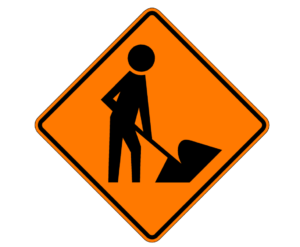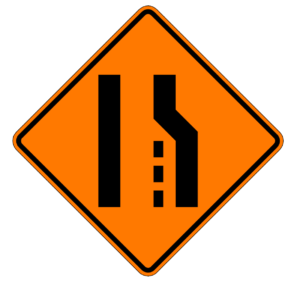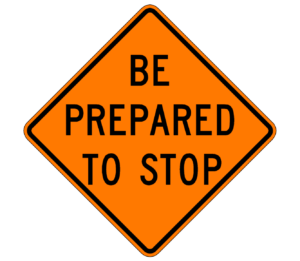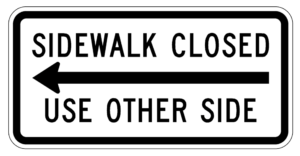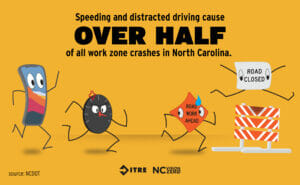Work Zone Safety
No one likes bumpy roads. Road crew teams work to maintain and repair our roads. Practice patience while traveling through a work zone – they’re out there for the benefit of all of us.
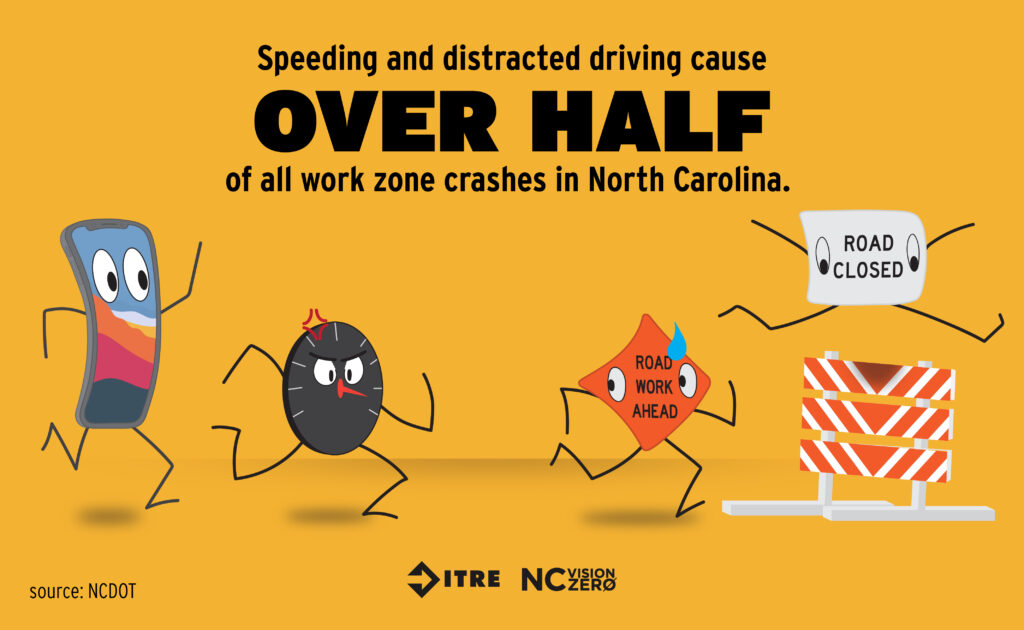
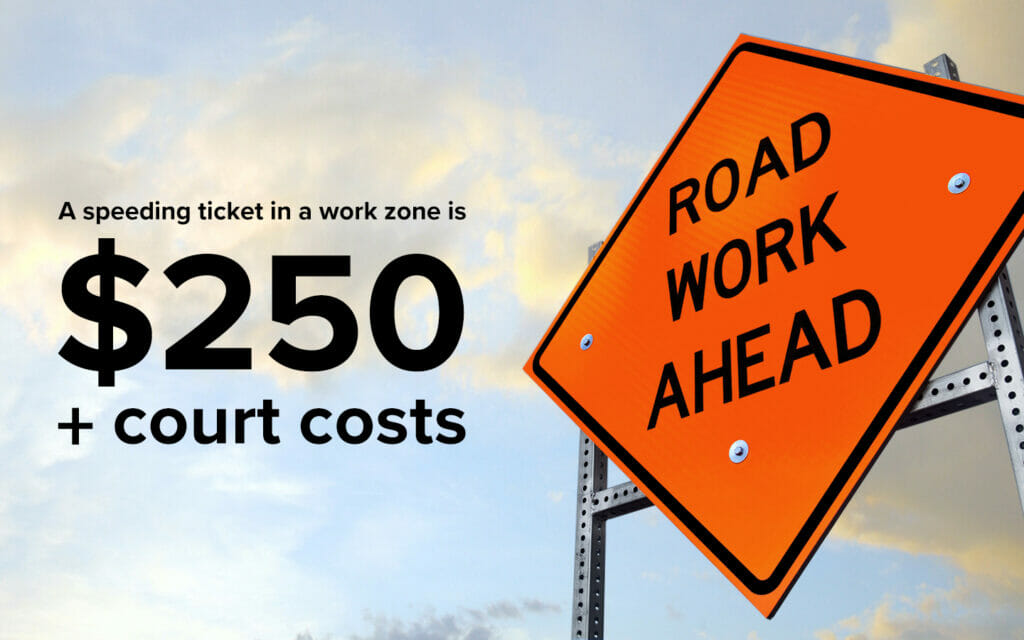
Quick Facts
Be patient. Driving 45 mph through a work zone on a 65 mph stretch of highway adds less than one minute to your trip (NCDOT).
In 2019, 30 people were killed in work zones in North Carolina (NCDOT).
In 2019, there were 7,029 work zone crashes in North Carolina (NCDOT).
Speeding and distracted driving account for over half of all work zone crashes in North Carolina (NCDOT).
Know Your Signs
Road work ahead. Be prepared for unusual driving conditions and look out for further instructions or warnings.
You have reached the end of a work zone. You can now resume normal and safe driving.
A flagger is ahead. Slow down, be prepared to stop, and watch the flagger for instructions.
<!– NEW
–>
Workers are ahead. Slow down and proceed with caution as workers may be near the road.
Land ends ahead. Slow down and be prepared to merge depending on which lane is closed.
Traffic is traveling in two directions. Slow down and be alert for oncoming traffic.
If a roadway is entirely blocked, detour signs will provide you with an alternative route.
Often used in conjunction with other signs, this sign informs you to stay alert as you may need to stop ahead.
People walking or rolling on the sidewalk should cross to use the other side of the road.
Work Zone Safety Tips
Leave more space between your vehicle and the one in front of you.
Be patient.
Check traffic information for work zones and possible delays. Schedule enough time to drive safely.
Turn your headlights on.
Follow instructions from flaggers.
Anticipate that other vehicles may slow, stop, or change lanes unexpectedly.
Resources
